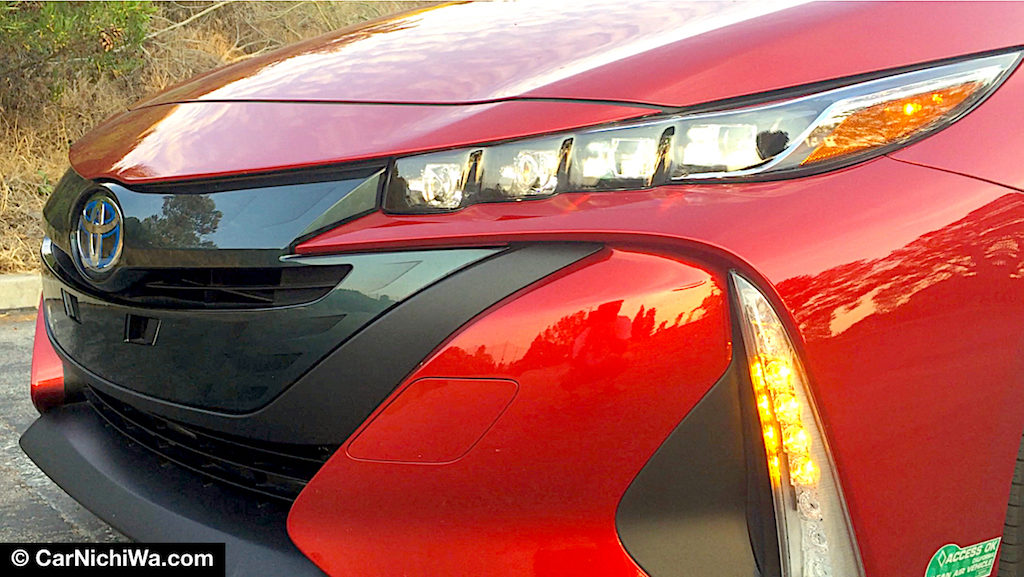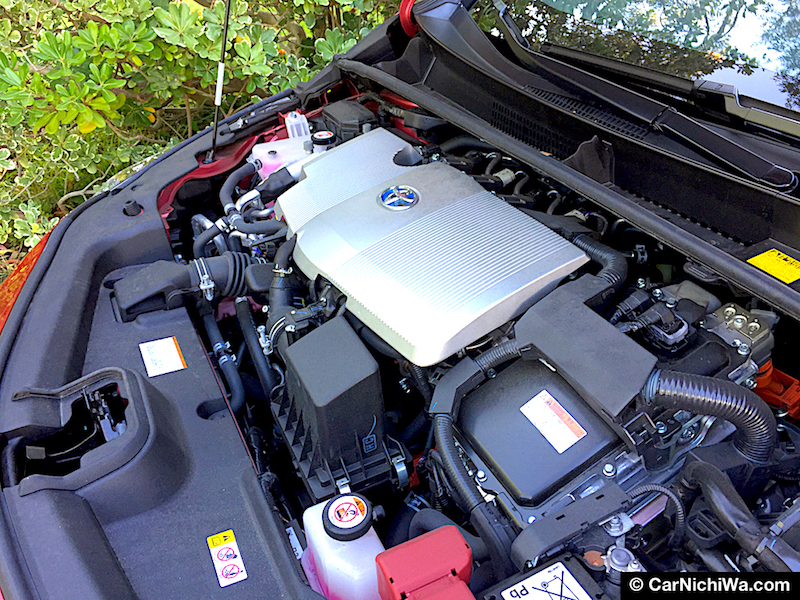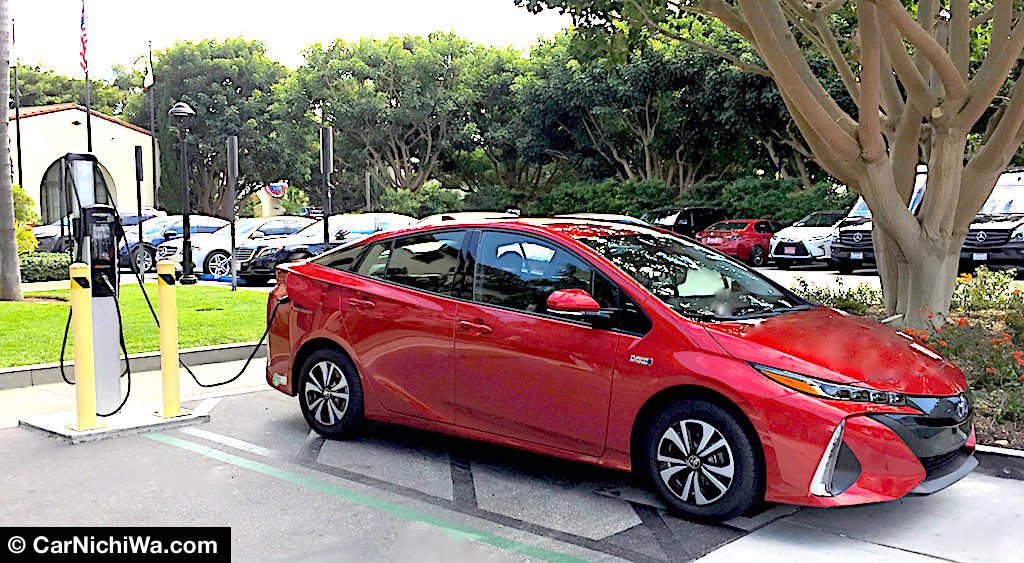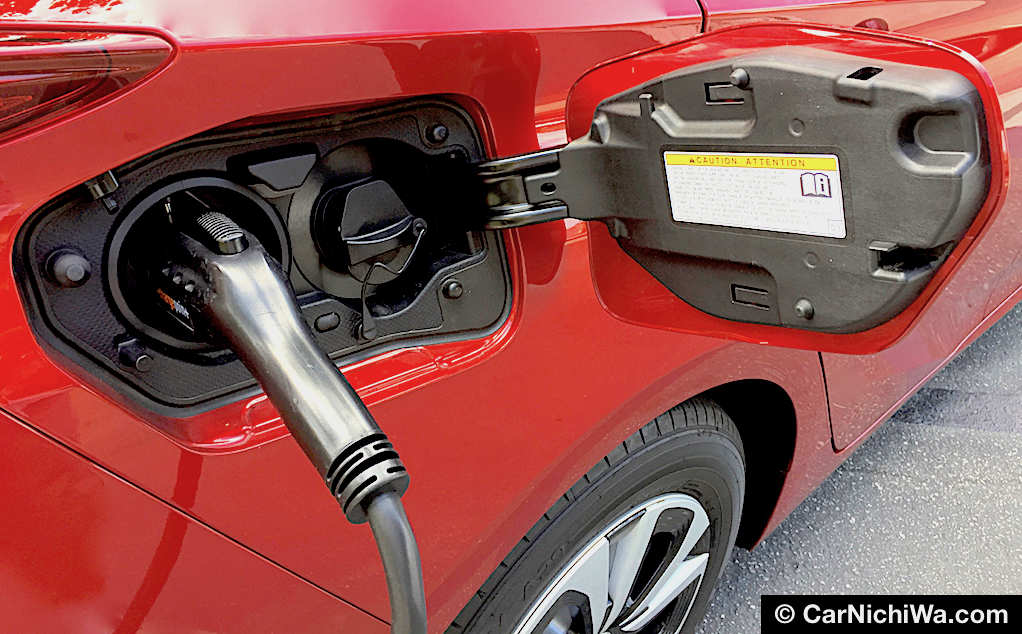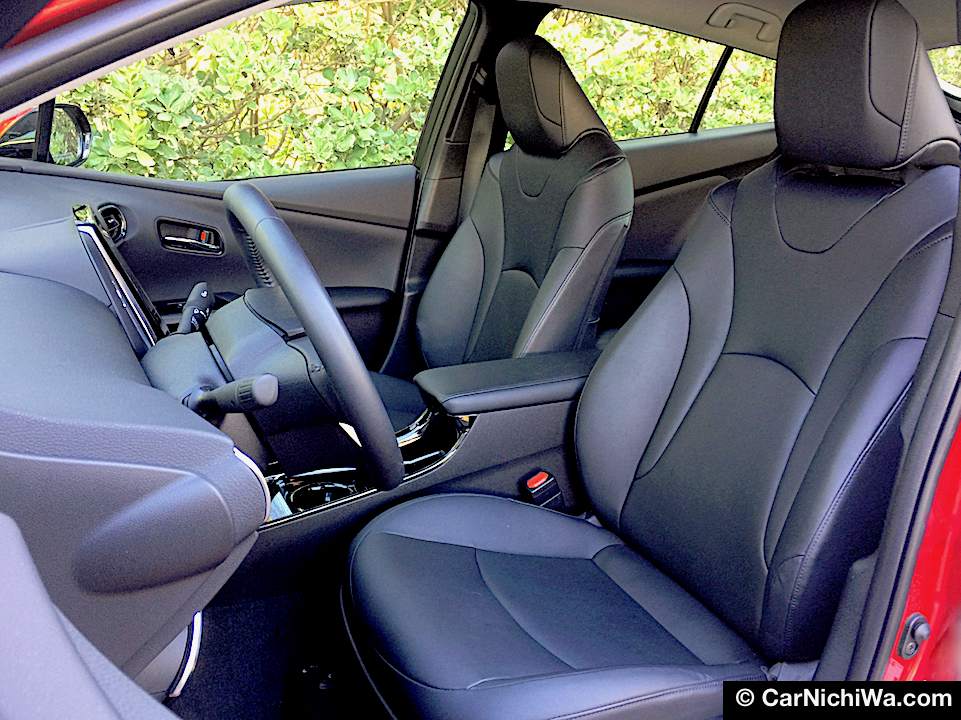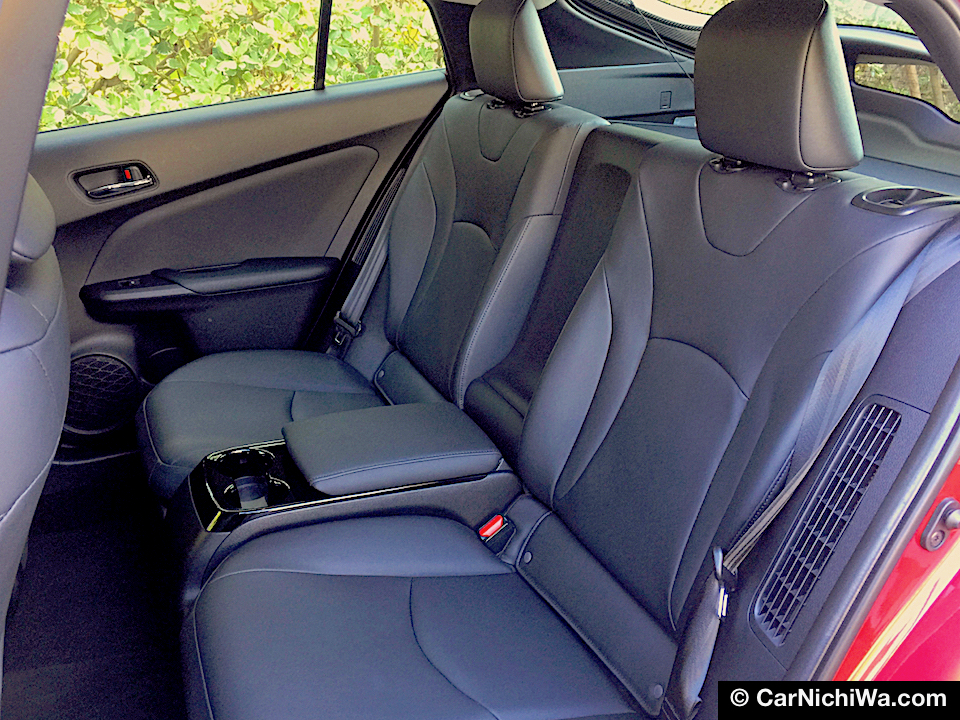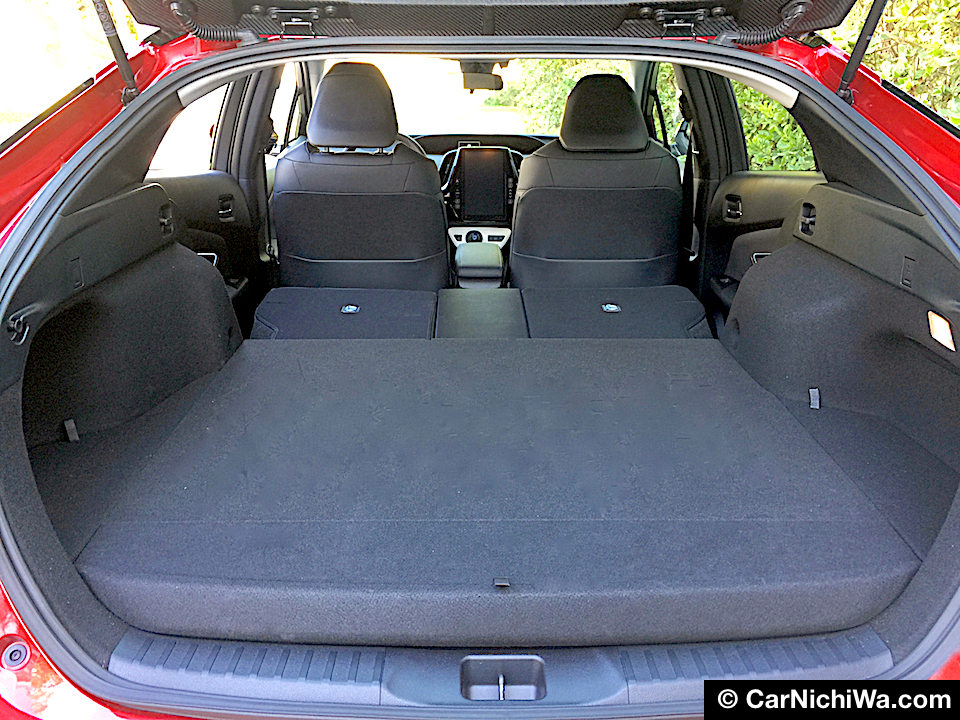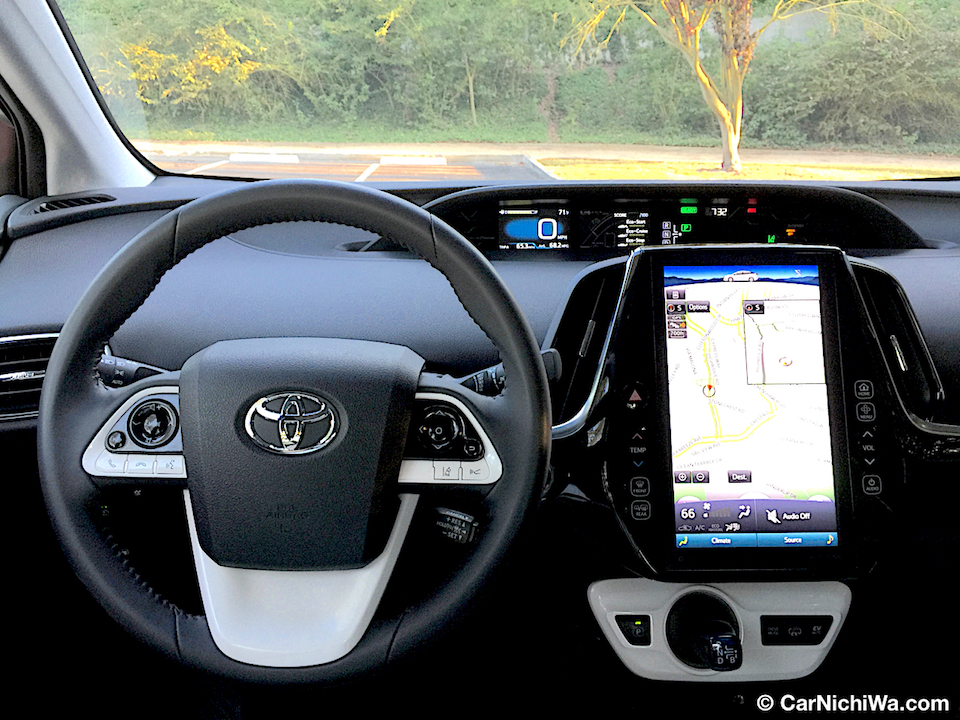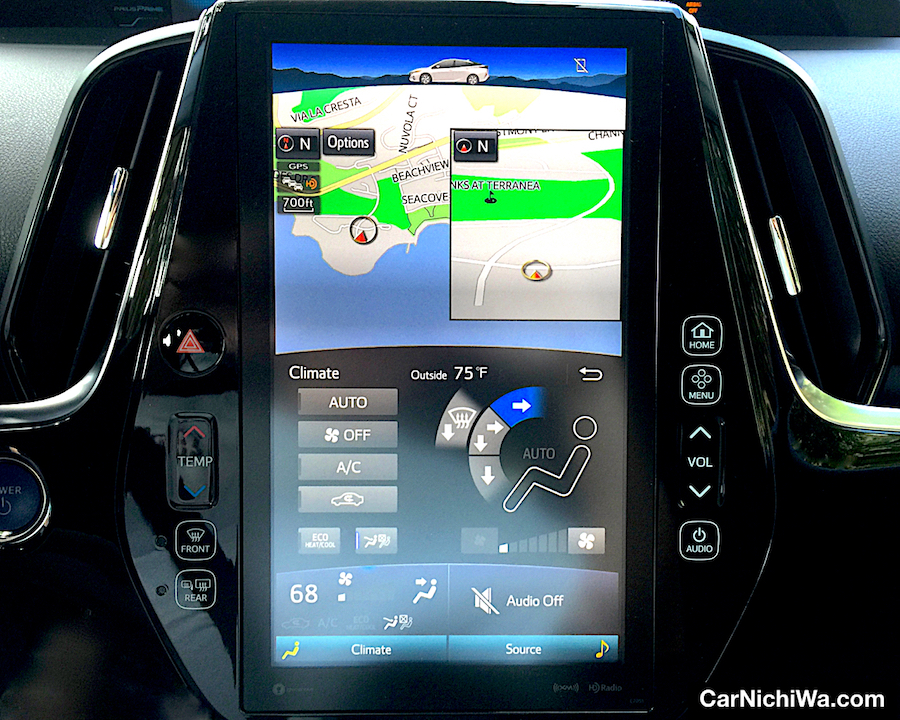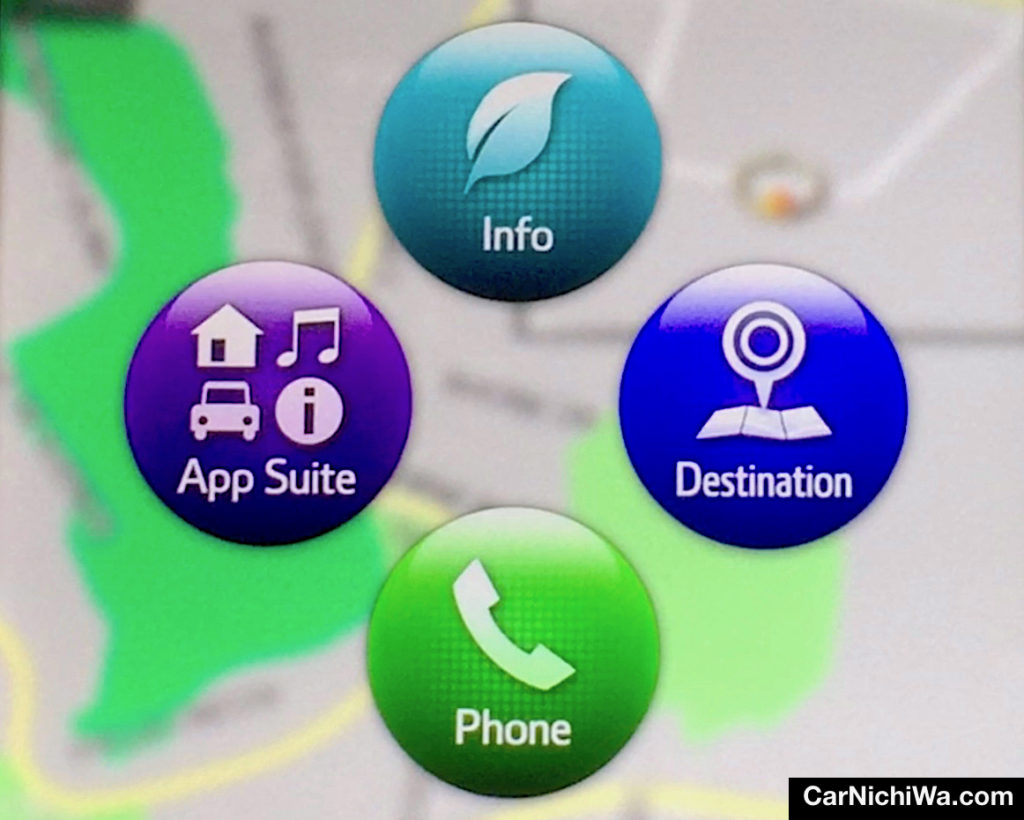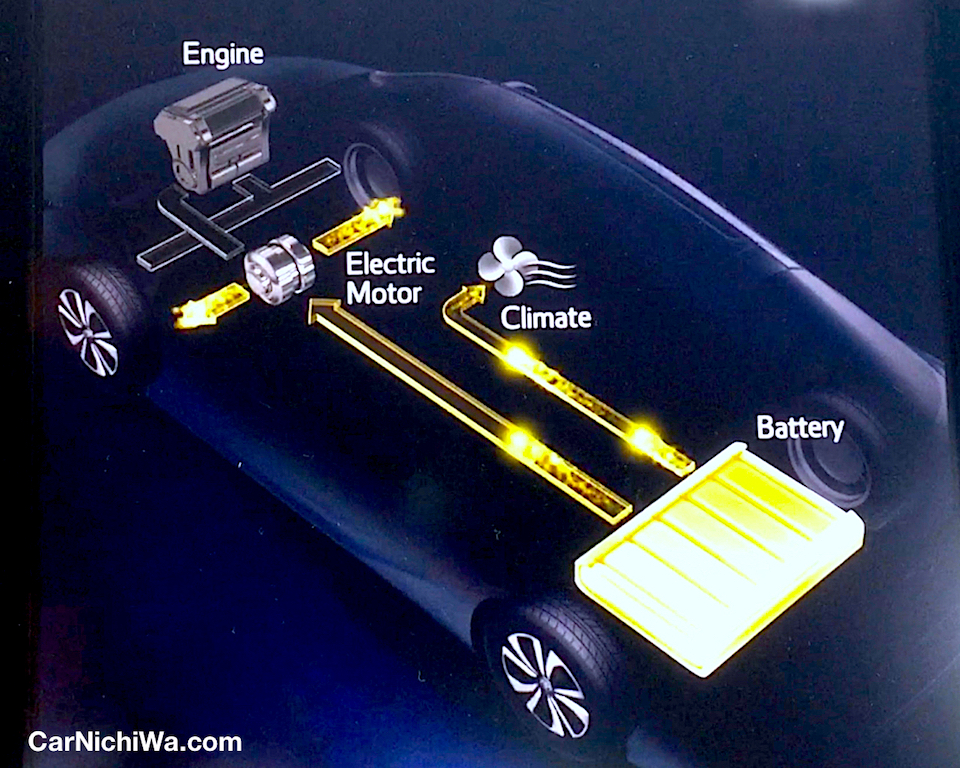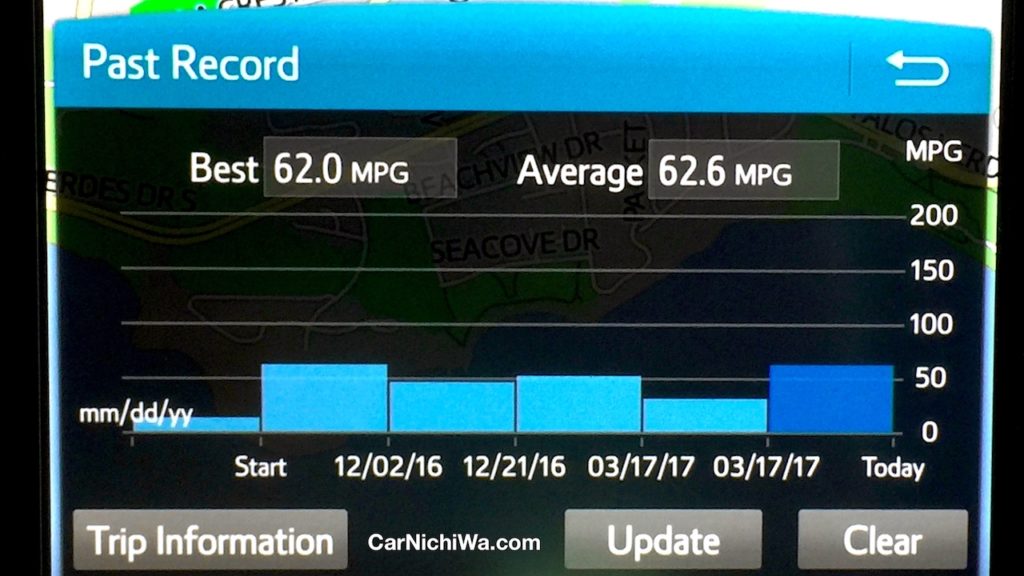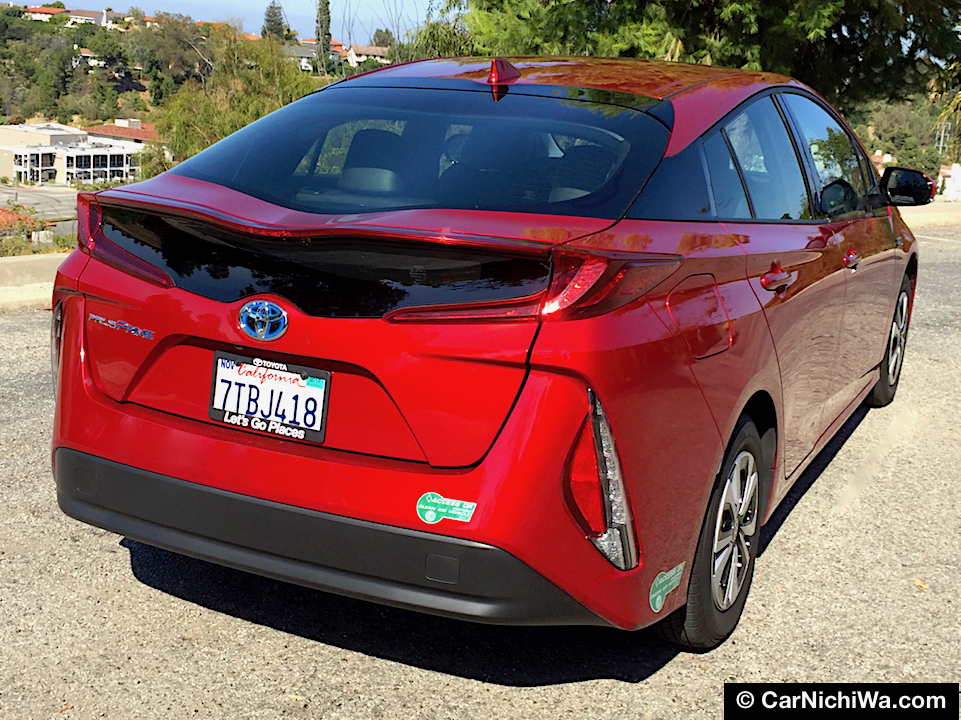By Steve & Tamami Laser
Way back in 1995 at the Tokyo Motor Show, we saw a concept car called the Prius that was Toyota’s vision of a future hybrid sedan. The first generation production car was launched in Japan in October 1997 with U.S. sales starting in 2000. This year marks the 20th anniversary of the Prius with millions sold worldwide.
For 2017, Toyota has introduced the Prius Prime as the most advanced model in the lineup to date. The Plug-in Hybrid is rated with an EPA estimated 133 MPGe (miles-per-gallon equivalent) that Toyota says is the highest rating among all vehicles. In the hybrid mode, Prius Prime is rated at 55 city/53 highway/54 combined. In the EV mode, using electricity alone, it has an EPA rating of up to 25 miles. It also carries a remarkable 640-mile total driving range which eliminates the potential “range anxiety” of a pure electric vehicle.
The best way to experience all that the new Prius Prime offers is from the driver’s seat. Join us for a drive in the new model during our test-drive video above. (video © CarNichiWa.com)
Three models are available for 2017: Prius Prime, Prime Premium and Prime Advanced. We selected the Premium as our test car with a base MSRP of $28,800. Adding destination brought the bottom line to $30,090.
Compared to the regular Prius Hybrid the Prime sports unique front and rear styling with distinctive fascias, bumpers and lights. We like the futuristic look of the low-profile LED headlights and acrylic grille on our tester. Automatic grille shutters (our of sight) are designed to help reduce drag when the radiator doesn’t need airflow. Prius Prime slips through the wind with a low 0.25 coefficient of drag.
Our walkaround video above offers a closer look at key Prius Prime features on the outside, inside and under the hood. We also demonstrate how easy it is to charge the Prius Prime at a public charging station. (video © CarNichiWa.com)
Prius Prime is equipped with a suite of standard safety features including the Toyota Safety Sense™ P (TSS-P) package with Pre-Collision System with Pedestrian Detection and Automatic Braking, Lane Departure Alert with Steering Assist, Full-Speed Dynamic Radar Cruise Control with full-stop technology and Automatic High Beams.
Like the regular Prius, Prime employs Toyota’s Hybrid Synergy Drive system that combines the output of a 1.8-liter Atkinson-cycle 4-cylinder engine with an electric motor and standard Continuously Variable Transmission. Prime’s hybrid system has a net output of 121 horsepower.
Prius Prime can be plugged in to recharge its larger 8.8kW lithium-ion battery pack. We used our local ChargePoint public charging station with its 240 volt charger. It takes about two hours to charge this way. Another method is to use the cable supplied with the car and plug it into a standard household outlet (Toyota recommends using a dedicated GFI 15A outlet). The quoted charging time this way is less than five-and-a-half hours.
As we show in our walkaround video, ChargePoint is really easy to use. We just scanned the bar code on our membership card which unlocks the paddle and plugged it into the Prius Prime. While it was charging we enjoyed a latte and then took our dogs for a walk.
Our Prius Prime Premium tester featured standard SofTex-trimmed heated front seats including 8-way power adjustment for the driver’s seat with power lumbar. The seats are comfortable on long drives and offer good support.
Due to the larger battery pack, the 60/40-split rear seat holds two passengers, instead of three like the regular Prius. The “limo-style” seats are separated by a center armrest with a storage compartment and two cupholders.
While there’s a bit less cargo space than the regular Prius, there’s still plenty of room for gear. Fold down the rear setbacks and there’s extra space for long items like skis or a surfboard. To help save weight, the rear hatch is made of carbon fiber, like a race car. That also makes it super easy to open and close.
The standard 11.6-inch touchscreen on our Premium model is a joy to use. The vertically oriented display operates like a tablet with pinch-and-zoom capability. Our tester included Entune™ Premium Audio with Integrated Navigation and App Suite, HD Radio™ predictive traffic and Doppler weather, and AM/FM cache radio that allows songs to be paused and played back later.
Prius Prime offers three driver-selectable modes. In EV mode, the Prime can go up to 25 miles on pure electricity with a full charge of the batteries. EV Auto Mode will rely on the battery more than the regular Hybrid Mode. The latter runs primarily on the gas engine with support of the electric motor. Like the regular Prius, Hybrid Mode includes Normal, Eco and Sport settings for different driving conditions. We used Sport when climbing the steep hills in our neighborhood for better performance.
The big screen in our test car had a split design that let us view a navigation map and climate control, for example, at the same time. Capacitive touch switches that flank the screen make it easy to quickly access the home screen, menu, or adjust the audio volume. We also used the separate voice command button on the steering wheel that let us access a wealth of information without taking our eyes off the road.
The menu button brings up these big, round icons that make it easy to quickly access key features and functions. This system is so pleasant to use that we really missed it when our week-long test-drive was complete, the Prius went back to Toyota, and we returned to our own personal car with a tiny screen.
One of the coolest displays is found in the Info section where we were able to see a realtime display of power flow from three different viewpoints. In the photo above that was taken by our co-pilot while the car was in motion, we see that the gas engine was turned off while energy stored in the battery pack sent power to the electric motor to drive the front wheels and also to the climate system.
So how did we do? When we measured our MPG the regular way, by simply dividing the miles travelled by the gallons of gas used, we came up with about 50 mpg. However, in pure EV mode, we travelled nearly 20 miles without using a drop of gas. Our car’s trip computer showed we averaged about 60 mpg, while the past record screen (above) showed the best MPG was about 62. If we had charged the batteries more often we likely could have done better.
That’s the beauty of the Prius Prime. We couldn’t plug-in where we live because there’s no plug available in the shared community parking garage. So we only plugged in when it was convenient for us to access a public charger. Theoretically, we could drive the Prius Prime without ever plugging it in and just add gas. And yet when we did charge the batteries, we travelled much farther than a regular Prius could on pure EV power alone.
The Prius has come a long way over the past 20 years. The Prius Prime is the most sophisticated and technically advanced model in its history. We don’t know if we could live comfortably with a pure electric vehicle, but we do know that we could live very well with the new Prius Prime.
Prius Prime press fleet vehicle provided by Toyota Motor Sales, U.S.A., Inc. Prices and vehicle information applies to models sold in the U.S. at the time of publication. All product information including prices, features and specifications, along with tax credits, is subject to change without notice.
Story, photos and videos © 2017 CarNichiWa.com

